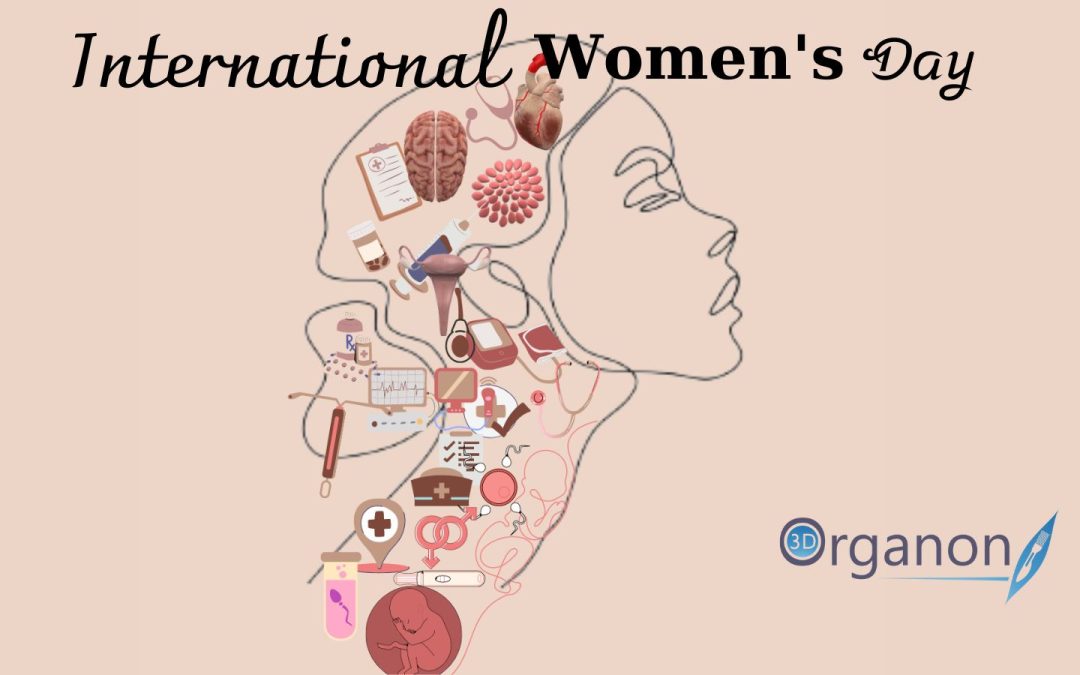Happy International Women’s Day!
This year, the International Women’s Day 2023 theme is “Embrace Equity”: a call to governments and world leaders to provide equity and end gender inequality.
International Women’s Day is a global event celebrated on the 8th of March every year since 1911, intending to commemorate women’s social, cultural, economic, and political achievements.
Although, apart from honoring the achievements, it is a great opportunity to raise awareness for the health status and the diseases affecting women.
Women may be less susceptible to infectious diseases than men but are prone to autoimmune diseases. Research attributes it to the X chromosome. Since the X chromosome has many genes relating to the immune system, and women receive two of them, it is logical to have an increased tendency to develop autoimmunity throughout their life.
Excepting autoimmunity, some other diseases that affect women are the following:
-
Heart Disease
The term “heart disease” refers to several types of heart conditions. The most common type of heart disease is coronary artery disease which affects the blood flow to the heart. Decreased blood flow can cause a heart attack.
People often do not consider heart disease a woman’s disease. Yet cardiovascular disease is the leading killer of women over age 25. It kills nearly twice as many women in the United States as all types of cancer.
-
Breast Cancer
Breast cancer is cancer that forms in the breast tissue. Like other cancers, breast cancer can invade and grow into the tissues surrounding the breasts. However, it can also be transferred to other parts of your body and form new tumors (metastasis). After skin cancer, breast cancer is the most common cancer diagnosed in women. Breast cancer can occur in both men and women, but it is much more common in women over 50. The prognosis of breast cancer is good if it’s detected at an early stage. Women who have inherited BCRA1 and BCRA2 mutations are more likely to develop breast and ovarian cancer.
-
Ovarian Cancer
Ovarian Cancer affects the ovaries of women. Some of the risk factors of this type of cancer are aging (usually over 50), family history, early onset of the period and late menopause, nulliparity or having a first child after the age of 35, and estrogen or fertility treatment therapy. The stages of ovarian cancer range from 1 to 4. The lowest stage indicates that the cancer is located in the ovaries. By stage 4, cancer has spread to distant areas of the body. Treatment depends on the stage of cancer.
-
Cervical Cancer
Cervical cancer is a type of cancer that occurs in the cells of the cervix, the lower part of the uterus that connects to the vagina. The main cause of cervical cancer is the long-lasting infection with certain types of human papillomavirus (HPV). HPV is a common virus that is passed from one person to another during intercourse. At least half of sexually active people will have HPV at some point in their lives, but few women will get cervical cancer. Also, early sexual activity, many sexual partners, a weak immune system, and smoking are some of the main risk factors. HPV vaccine, routine cervical or Pap tests, and practicing safe sex can reduce the risk of cervical cancer.
-
Gynecological Disorders
Gynecological disorders are conditions that affect the normal function of female reproductive organs such as the breasts, uterus, ovaries, fallopian tubes, vagina, and vulva. There are various types of gynecological disorders such as Endometriosis, Uterine Fibroids, Ovarian cysts, Bartholin’s cyst, Cervical dysplasia, Incompetent cervix, and Pelvic organ prolapse. A healthy lifestyle and regular screenings are the best ways to prevent those disorders.
-
Osteoporosis
Osteoporosis is a bone disease that develops when bone mineral density and bone mass decrease, or when the structure and strength of the bone change. This can lead to a decrease in bone strength which can increase the risk of fractures.
Women are more at risk of developing osteoporosis than men because of menopause which affects bone density. After menopause, the estrogen levels drop dramatically and this lead to a rapid decrease in bone density. Regular exercise, Vit D supplement taking, quitting tobacco, reducing alcohol consumption, and regular screening can prevent osteoporosis.
-
Depression and Anxiety
Anxiety and depression are types of mental health disorders. Women are nearly twice as likely as men to be diagnosed with depression and anxiety which can occur at any age. Among other things, depression causes feelings of sadness, hopelessness, and reduced energy. Anxiety creates feelings of nervousness, worry, or phobia. Although the two conditions are different, a person can have both at the same time. Agitation and restlessness can be symptoms of both depression and anxiety.
Hormonal changes, environmental factors, personal life circumstances, and experiences, lack of supported networks, and family predisposition are some of the factors that contribute to these types of disorders.
Today, on this special day, let’s motivate every woman to take care of herself and her health. Here are these some tips that can help you increase your chances of better health throughout your life:
- Love who you are
- Quit smoking
- Keep a normal BMI
- Exercise regularly
- Sleep well
- Eat healthily
- Stay on top of your annual screening checks
- Practice mindfulness
- Ask for support from your family, friends or a professional
For the latest news, follow 3D Organon on social media.

